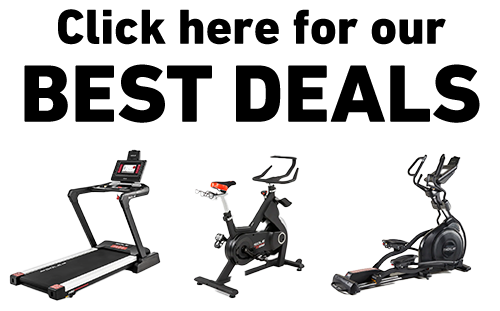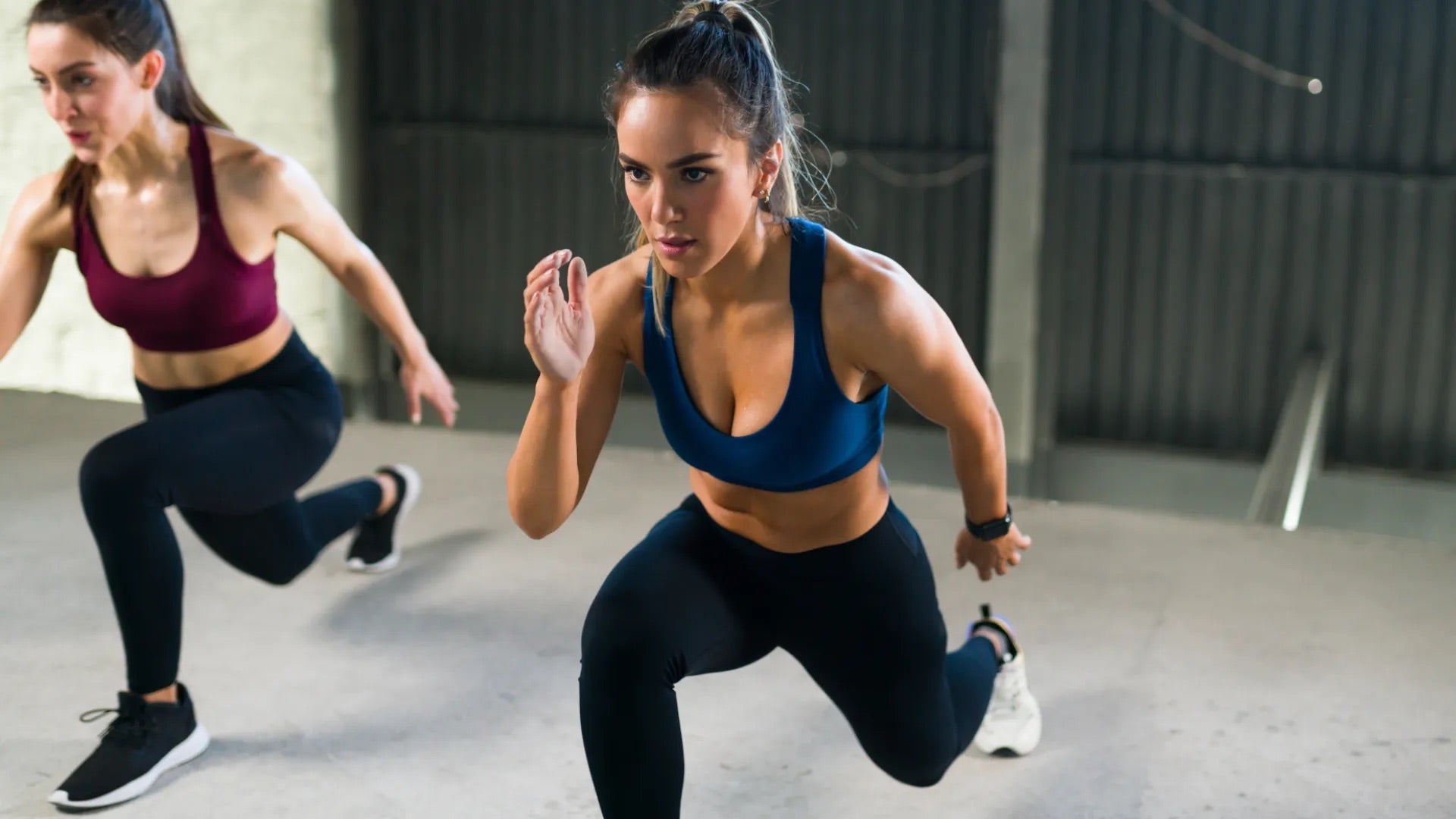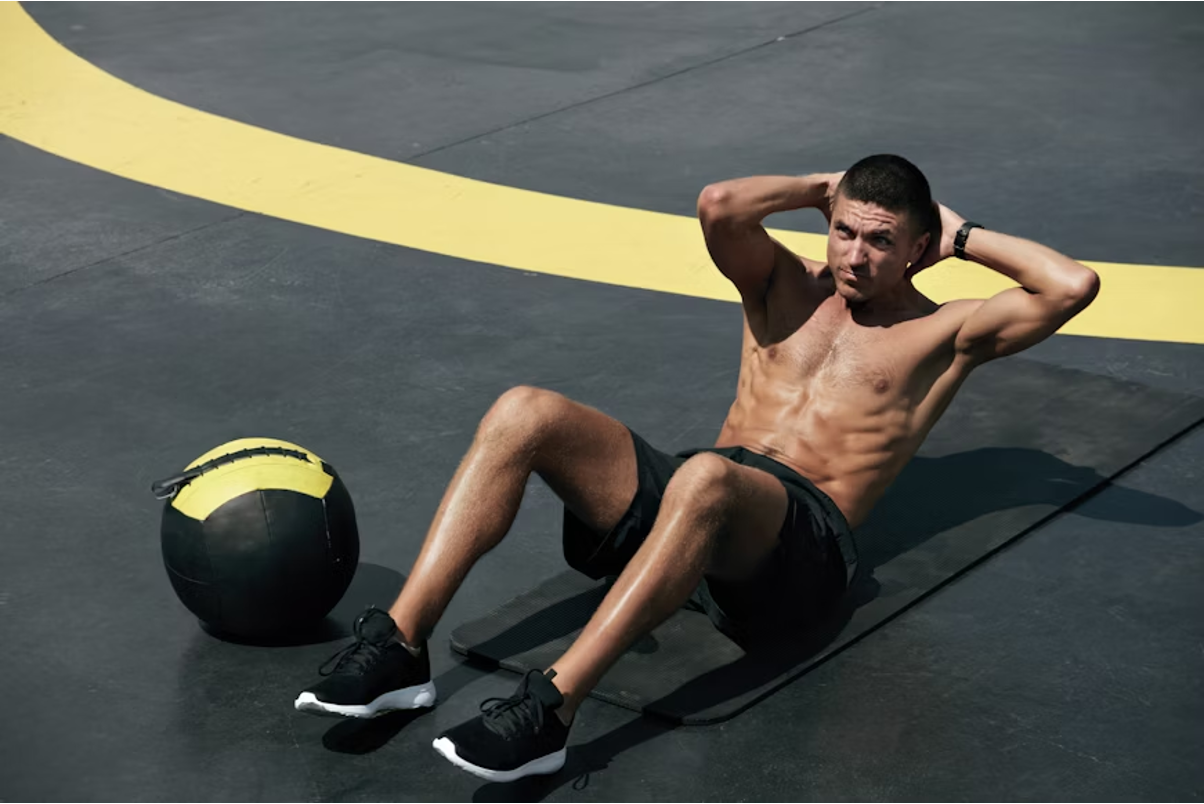Key Takeaways
- Pushups provide more balanced activation across the upper and middle portions of the chest, making them ideal for overall chest development.
- Dips require greater strength and shoulder stability, making pushups better for beginners, while dips offer more progressive overload potential for advanced lifters.
- The mechanical advantage of dips comes from the deeper stretch at the bottom position, which creates greater tension through a larger range of motion.
- Incorporating both exercises in your training routine provides complementary benefits that target different aspects of chest development.
- SOLE's adjustable dumbbells and weight bench enhance both exercises with precise progression and stability.
The Battle of Bodyweight Giants: Pushups vs Dips for Chest Development
For building an impressive chest without equipment, two exercises reign supreme: pushups and dips. Both are compound movements that deliver serious bang for your buck, but which one deserves the crown for chest development? The answer isn't as straightforward as you might think.
Each exercise offers unique benefits that target different aspects of chest development, and understanding these differences can help you optimize your training for maximum results.
What makes this comparison particularly interesting is that both exercises are accessible, require minimal equipment, and can be progressed or regressed to match any fitness level. Yet despite these similarities, pushups and dips create distinctly different training stimuli for your chest muscles.
|
Build Your Foundation with Premium-Grade Strength Equipment!
 Complete Your Home Gym:
Why Choose SOLE Strength: ✓ Heavy-duty steel construction with rust protection 30-Day Money-Back Guarantee: Love it or return it, no questions asked. |
How Pushups and Dips Target Your Chest Muscles

Understanding chest muscle anatomy reveals why different pressing angles activate various regions of the pectoralis major.
Chest Muscle Anatomy: What You're Actually Training
The pectoralis major serves as the primary mover in both pushups and dips, responsible for horizontal adduction of the arm across the chest and internal rotation of the shoulder. It originates from the clavicle, sternum, and costal cartilages of the ribs, and inserts into the humerus (upper arm bone).
This anatomical arrangement means that different angles of pressing movements can emphasize different portions of the muscle. When targeting chest development, know that the upper fibers (clavicular head) tend to be activated more during incline movements, while the lower fibers (sternal head) respond better to decline movements.
The middle portion gets significant stimulation from flat pressing motions. Understanding these distinctions helps explain why pushups and dips stimulate the chest differently—they place your body at different angles relative to the resistance.
Pushup Mechanics and Chest Activation
Pushups primarily function as a horizontal pressing movement, similar to a bench press. During a standard pushup, your body forms a plank position with weight distributed between your hands and toes.
As you lower yourself toward the ground and press back up, your chest muscles work to horizontally adduct your arms against gravity, with your body weight providing the resistance.
From a biomechanical perspective, standard pushups create balanced activation across the chest, with slight emphasis on the middle portion of the pectoralis major.
Dip Mechanics and Chest Activation
Dips represent a vertical pressing movement that places your body in a fundamentally different position relative to gravity.
When performing chest-focused dips (as opposed to triceps dips), you typically lean forward slightly while lowering your body between parallel bars or rings. This forward lean is crucial because it shifts emphasis from the triceps to the chest by changing the angle of resistance.
The most distinctive feature of dips is the deep stretch they create in the chest at the bottom position. During dips, the pectoralis major experiences this stretch under load, creating substantial mechanical tension—a primary driver of muscle growth.
Pushups: The Chest-Building Classic

The standard pushup remains one of the most effective chest-building exercises due to its scalability, convenience, and balanced muscle activation across all fitness levels.
Why Pushups Are Great for Chest Development
The standard pushup places your body at approximately a 45-degree angle relative to the vertical plane, which creates an ideal balance between horizontal and vertical pressing. This angle naturally engages both the clavicular (upper) and sternal (mid/lower) heads of the pectoralis major, resulting in comprehensive chest development.
Additionally, pushups naturally engage the serratus anterior, that is, the "boxer's muscle" that gives the chest that finished, athletic look.
What sets pushups apart is their closed-chain nature, meaning your hands remain fixed while your body moves through space. This creates greater stability demands and generates more motor unit recruitment than many open-chain movements.
Common Pushup Form Mistakes That Limit Chest Growth
Despite their apparent simplicity, many fitness enthusiasts sabotage their chest development with poor pushup technique. The most common error is improper hand placement.
Positioning hands too wide actually reduces chest activation and places unnecessary stress on the shoulder joints. For optimal chest recruitment, hands should be placed slightly wider than shoulder-width, with fingers pointing forward or slightly outward.
Another critical mistake is an insufficient range of motion. Half-repetitions dramatically reduce chest fiber recruitment and limit the stretch-mediated hypertrophy that occurs when lowering to proper depth.
Your chest should come within a few inches of the floor at the bottom position, with elbows flexed to at least 90 degrees to fully engage the pectoralis major.
5 Pushup Variations That Target Different Parts of Your Chest
- Decline Pushups (feet elevated): Shifts emphasis to the upper chest by changing the angle of resistance
- Diamond Pushups (hands close together): Increases activation of the inner chest fibers while recruiting triceps
- Wide-Grip Pushups: Places greater emphasis on the outer pectoral fibers
- Deficit Pushups (hands on elevated surfaces): Increases range of motion for a deeper chest stretch
- Single-Arm Pushups: Creates unilateral loading while significantly increasing resistance
Dips: The Advanced Chest Developer

Dips create unmatched lower chest activation through their unique vertical pressing pattern and deep stretch position.
Why Dips Create Massive Chest Tension
The biomechanical advantage of dips comes from the extreme stretch position at the bottom of the movement.
When you lower yourself between parallel bars with a forward lean, your chest fibers reach a significantly stretched state while still bearing your bodyweight.
This stretched-position loading is particularly effective for stimulating muscle growth, as mechanical tension is maximized when muscles are trained in their lengthened state.
Proper Dip Form for Maximum Chest Engagement
The difference between a triceps-dominant dip and a chest-dominant dip comes down to body positioning and execution. For maximum chest activation, lean your torso forward approximately 30–45 degrees throughout the movement.
This forward lean shifts the load from the triceps to the pectoralis major, particularly the lower fibers. Hand position significantly influences chest recruitment during dips.
For optimal pectoral engagement, use a slightly wider grip with hands positioned just outside shoulder width. This width creates a more horizontal adduction component to the movement, similar to how a wider grip bench press targets the chest more effectively.
Dip Variations That Emphasize Chest Over Triceps
- Ring Dips: The instability forces greater chest recruitment while allowing deeper stretch
- Wide-Grip Dips: Shifts emphasis from triceps to outer chest fibers
- Weighted Dips: Increases intensity without changing movement pattern
- Assisted Dips: Provides support for beginners while maintaining proper form
- Feet-Forward Dips: Creates greater forward lean, increasing chest activation
Elevate Your Pushup and Dip Training with SOLE's Premium Equipment

Ready to maximize the effectiveness of both pushups and dips? SOLE's strength equipment transforms these bodyweight classics into precision training tools.
The SW116 Weight Bench, with its 9 adjustable positions, is perfect for decline pushups, incline variations, and supported dip progressions. Its rock-solid 550-lb capacity provides the stability needed for advanced movements without wobbling or shifting.
For progressive overload, the SW180 Adjustable Dumbbells add resistance to pushups when held on your back or provide alternative pressing angles that complement your bodyweight training. The quick-adjust system means you can seamlessly transition between exercises without interrupting your workout flow.
The SOLE Equipment Mat provides essential cushioning for high-volume pushup sessions while protecting your hands and wrists. Its non-slip surface ensures stability during challenging variations like archer pushups or single-arm attempts.
Don't forget the SW111 Olympic Barbell for weighted pushups; place it across your upper back for serious progressive overload that takes these exercises to the next level. The SOLE+ App includes guided progressions showing exactly how to advance from basic variations to advanced techniques safely.
Frequently Asked Questions (FAQs)
Are pushups or dips better for upper chest development?
Pushups, particularly decline variations with feet elevated, are significantly better than dips for upper chest development. While standard dips primarily activate the lower and middle chest regions, decline pushups can be considered a direct upper chest exercise comparable to incline bench pressing.
Can I build a bigger chest with just bodyweight exercises?
Yes, significant chest development is absolutely possible using only bodyweight exercises, provided you implement progressive overload principles. The key is continuously increasing the challenge through advanced variations, manipulating leverage, adding external resistance, or increasing volume over time. Many gymnasts and calisthenics athletes have developed impressive chest musculature using primarily bodyweight methods.
How many pushups or dips should I do to see chest growth?
Chest growth results from sufficient mechanical tension, metabolic stress, and volume—not simply from performing a specific number of repetitions. For hypertrophy, approaching muscular failure in the 6–15 repetition range is most effective. This means selecting variations challenging enough that you can perform at least 6 reps but not more than 15 with good form.
Most trainees need 3–5 sets per exercise, totaling 12–20 weekly sets of direct chest work distributed across 2–3 training sessions.
Do dips cause shoulder problems more than pushups?
Dips place greater stress on the shoulder complex than pushups due to the extreme range of motion and position of the glenohumeral joint during the movement. This increased stress isn't inherently problematic for healthy shoulders with proper technique, but it can exacerbate existing issues when performed incorrectly.
To minimize shoulder stress during dips, maintain a slight forward lean, control the descent rate, and limit depth to where shoulders remain safe (typically when upper arms are parallel to the ground).
Which exercise should beginners master first?
Beginners should definitely master pushups before attempting dips. Pushups develop the foundational strength, motor control, and joint stability necessary for safe dip performance. The progressive nature of pushups allows beginners to start with modified versions using the SW116 bench for incline pushups and gradually work toward standard pushups.




Leave a comment
This site is protected by hCaptcha and the hCaptcha Privacy Policy and Terms of Service apply.